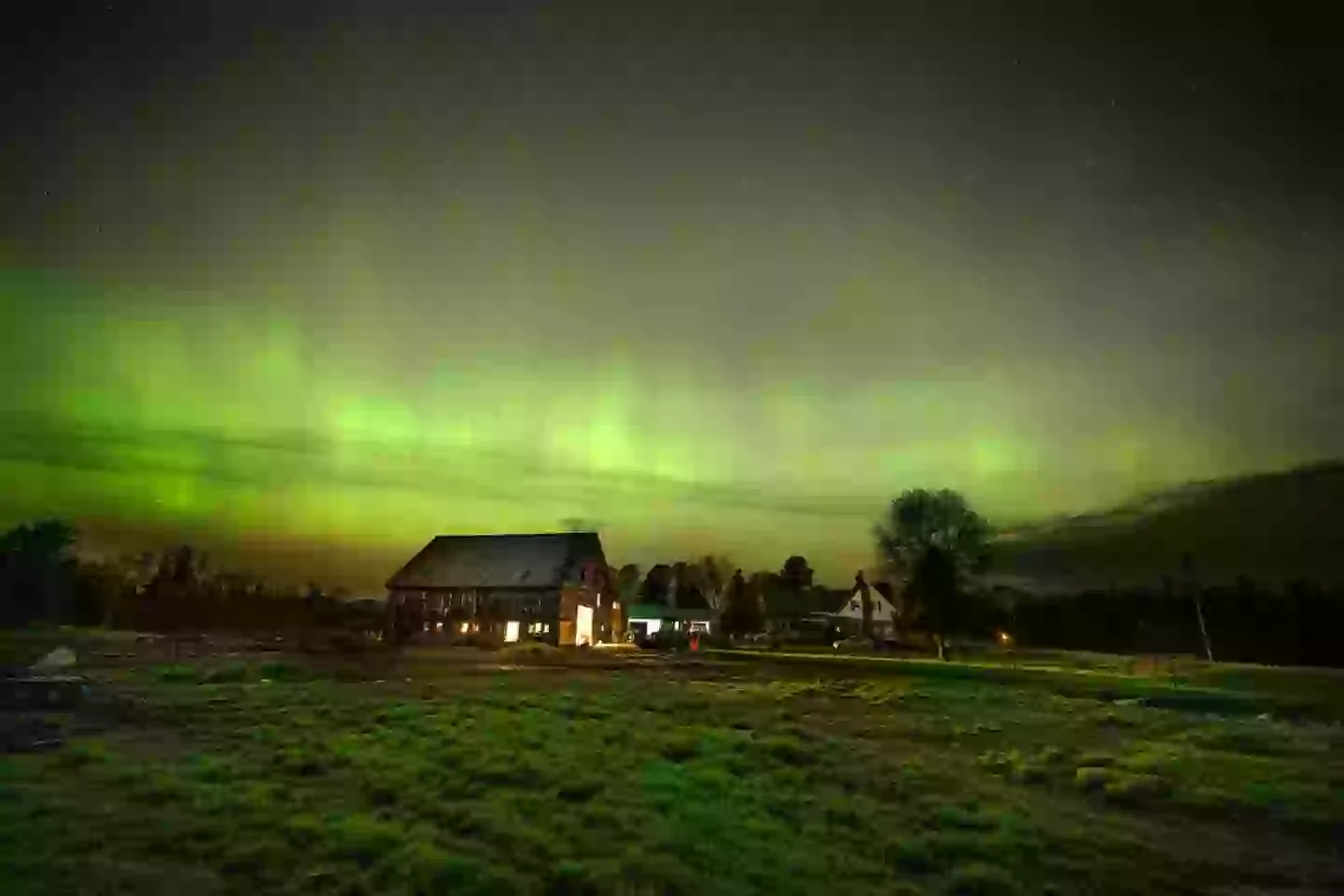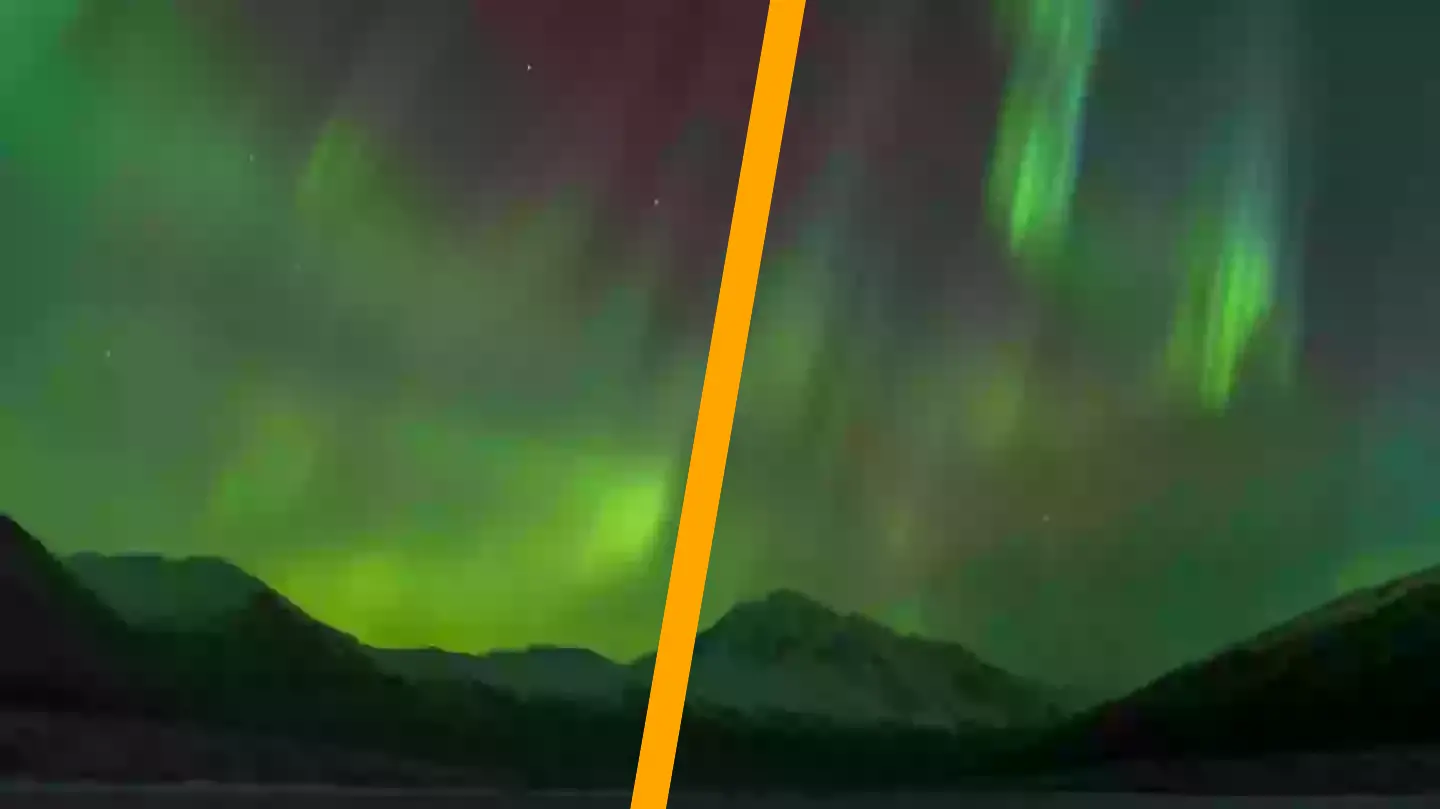This week, a spectacular show of Northern Lights is anticipated to brighten the night sky, coinciding perfectly with Valentine’s Day celebrations.
The Northern Lights, or Aurora Borealis, are a natural light display predominantly seen in high-latitude regions. This celestial event is marked by shimmering waves of green, pink, and sometimes purple hues dancing across the skies.
The phenomenon occurs when charged particles from the sun collide with the Earth’s atmosphere, a spectacle that has fascinated people for millennia.
According to SpaceWeather.com, an incoming solar wind is expected to impact the Earth, originating from a ‘canyon-like hole’ in the sun’s atmosphere.
The National Oceanic and Atmospheric Administration (NOAA) has indicated that this could lead to a ‘G1 (minor) geomagnetic storm.’ This activity is expected to be visible from Thursday, February 13, into the evening of Valentine’s Day, with significant activity anticipated.

The light show might be visible in parts of the northern United States and Canada.
It is no surprise that Alaska, given its northern location, will likely witness a vivid display. If conditions allow, the Northern Lights could extend as far south as northern Michigan and Maine over the next two nights.
NOAA advises viewers to ‘get away from city lights’ for the best chance of seeing the Aurora Borealis. However, visibility also hinges on clear night skies.
“The best aurora is usually within an hour or two of midnight – between 10pm and 2am local time,” the agency explained.
“These hours of active aurora expand towards evening and morning as the level of geomagnetic activity increases.
“There may be aurora in the evening and morning but it is usually not as active and therefore, not as visually appealing.”

For those keen on capturing the lights, a high-end DSLR camera isn’t necessary.
Your iPhone, when optimized properly, can capture the brilliance of the auroras. Ensure Night Mode is activated, which should automatically engage in low-light settings. If it doesn’t, manually access it through the camera app’s settings.
Adjust the exposure time to its maximum setting, allowing your device to capture more light and detail of the auroras.
While an iPhone 11 or later model is needed for optimal results, using a tripod can significantly enhance photo quality. Shaky hands can affect images, particularly with high exposure settings.
To achieve those striking images often seen on social media, maintaining stability during shooting is crucial.

